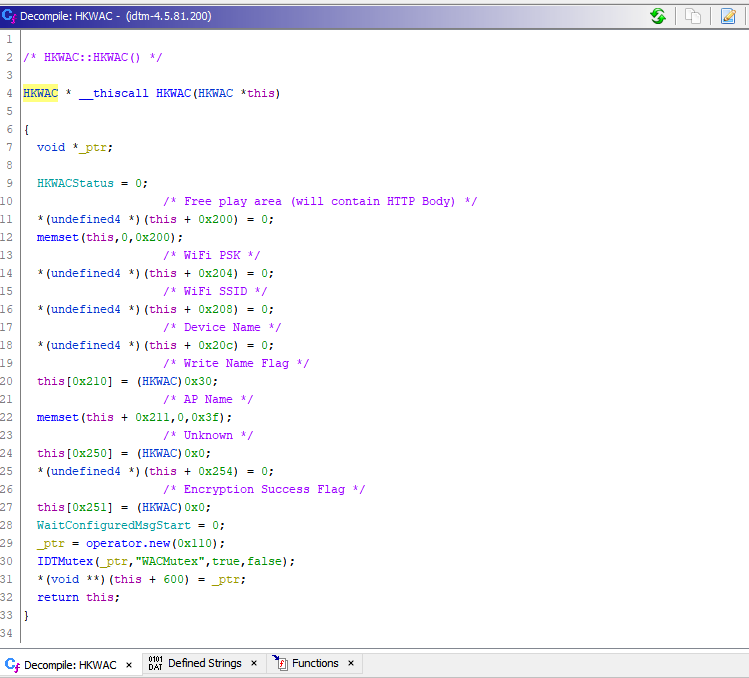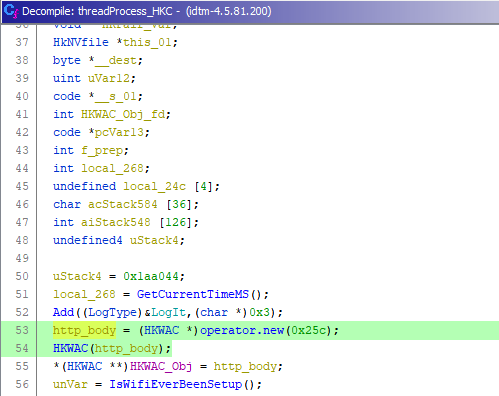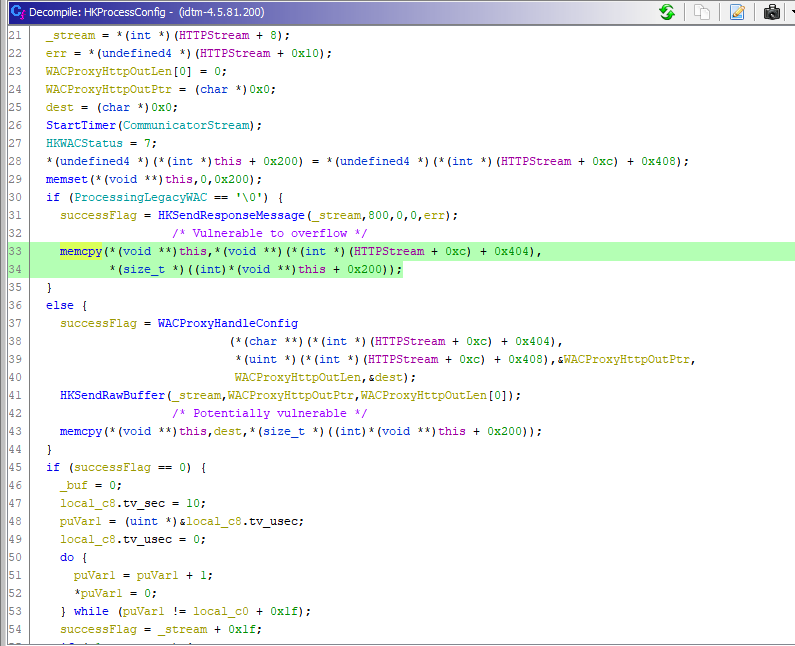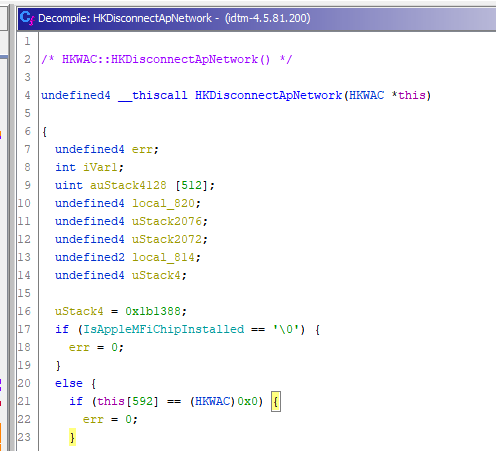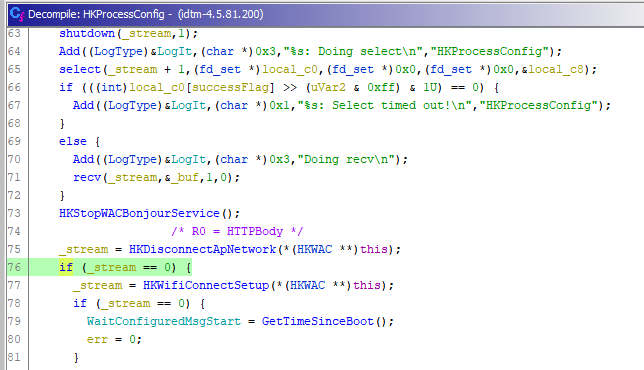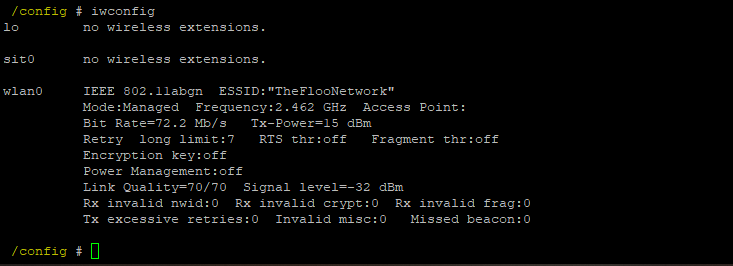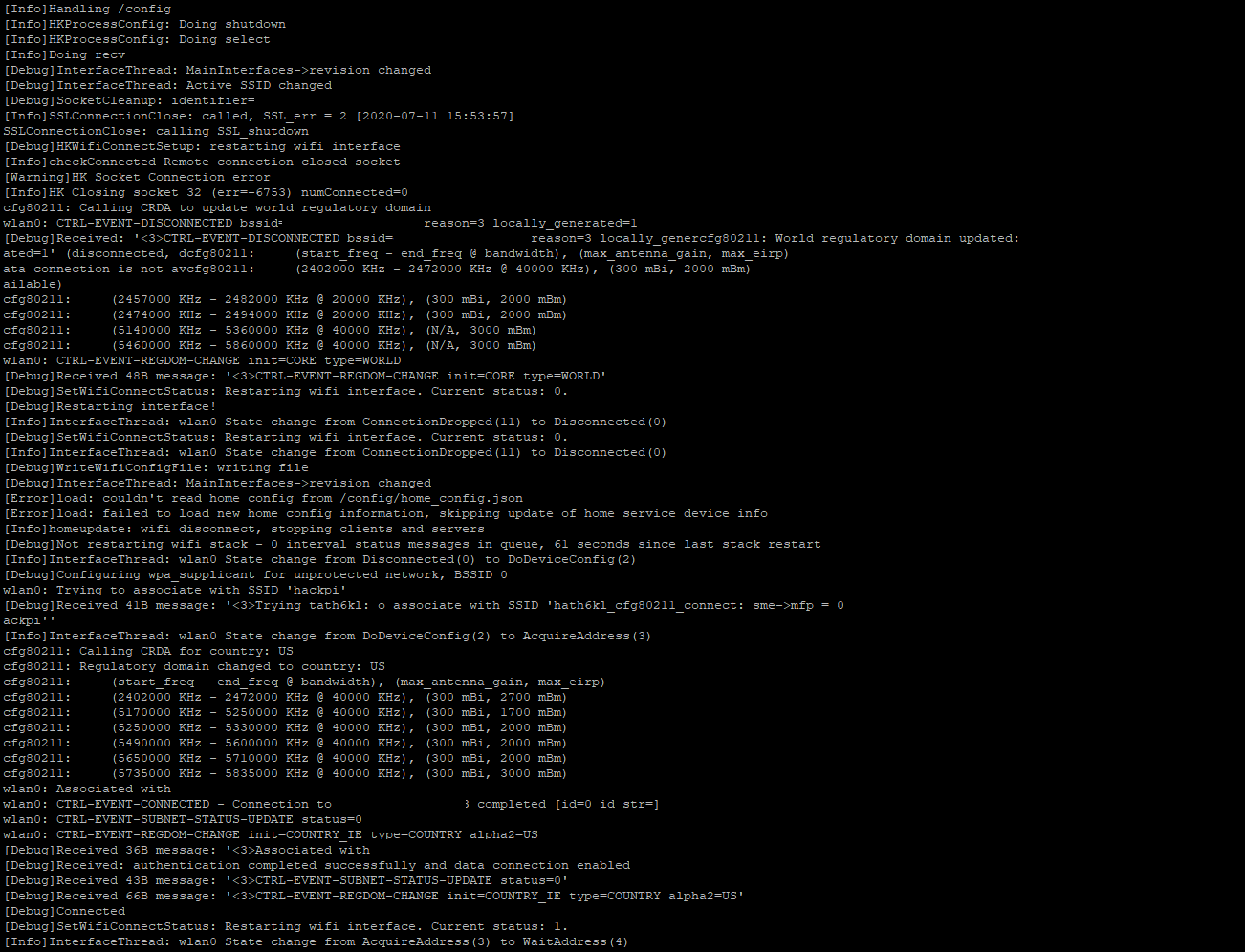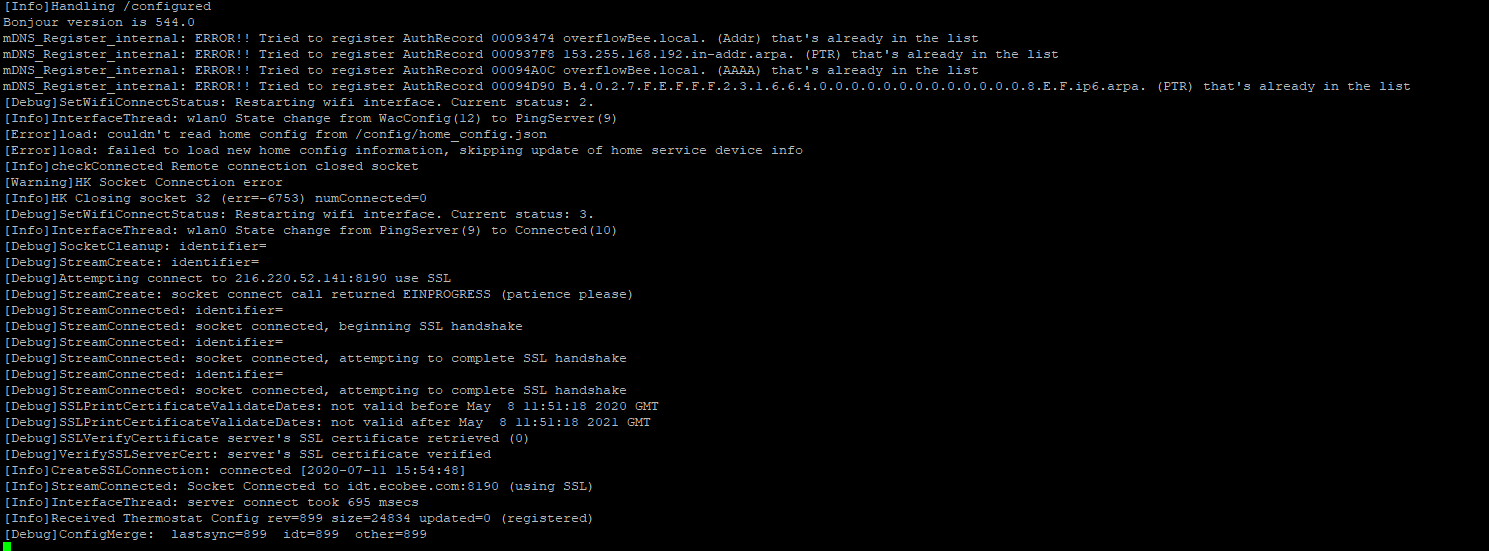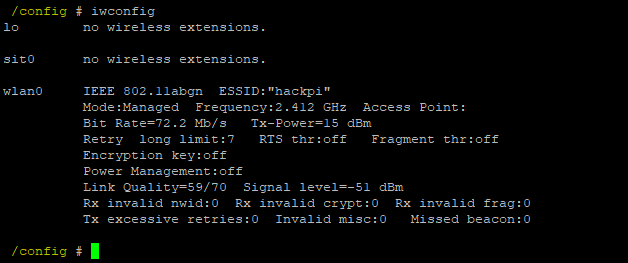Risk Summary
A heap overflow vulnerability exists in the ‘HKProcessConfig’ function that overflows inside the HKWAC object. This object is responsible for managing the Homekit Wireless Access Control setup process. A threat actor can craft a malicious payload to control values inside the object causing the ecobee3 device to connect to a separate WiFi access point.
Given the nature of memory attacks, it may be possible to extend this attack further to achieve code execution.

